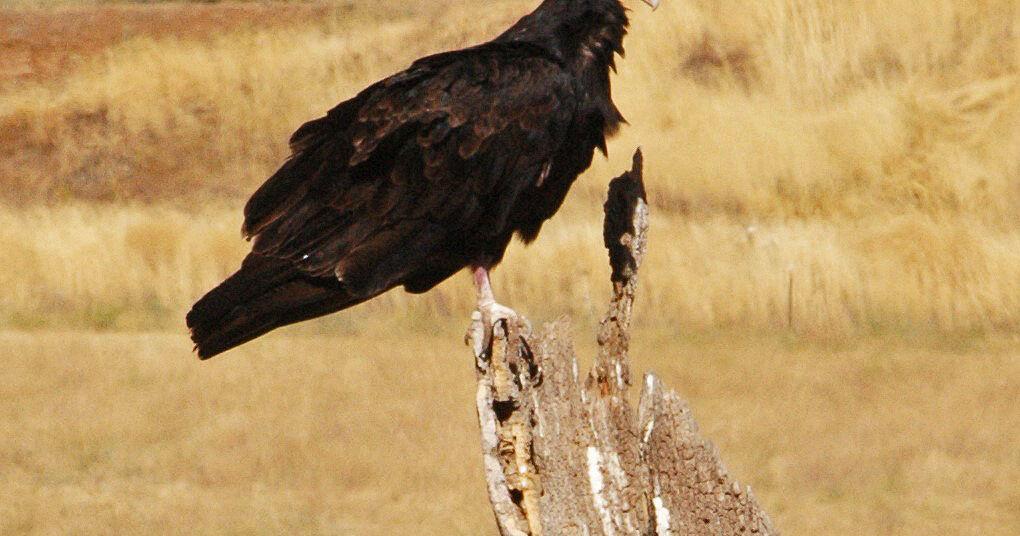Robert Enriquez took this photo of a mature Turkey Vulture (Cathartes aura) as it rested on an old Valley Oak (Quercus lobata) snag in Golden Hills.
Although these birds are thought of as having uniformly black feathers, you can see lighter feather edges on this bird that hint at the fact that Turkey Vulture feathers are more of a very dark brown than black true.
Ravens, on the other hand, are genuinely black regardless of the direction of the light or the way you are looking at them. Hold a raven’s feather in your hand, and it is typically a shiny, coal black from any angle.
Turkey Vultures often appear black as you view them from below, silhouetted against the sun and the sky above. However, under the right lighting conditions, you can see that they are really a dark chocolate brown. And if you hold a Turkey Vulture’s feather in your hand, you can see the brown chestnut highlights and light edges.
The Turkey Vulture’s scientific name can seem baffling — Cathartes is from the Greek word for “purify or cleanse,” the same origin as the word catharsis, but the species name is derived either from the Latin “aureus” meaning “gold,” or “aura” meaning “wind.” So either a golden purifier or a purifying wind. I choose the latter, since Turkey Vultures ride the wind, and in cleaning up carcasses they do serve as a kind of purifier.
Turkey Vultures migrate through Tehachapi Pass each autumn in great numbers, exceeding 30,000 birds. They have started to appear this year, though not it large numbers yet. In early spring, the vultures come back through in a much more dispersed fashion. They also pair up and nest in the Tehachapi Mountains, typically in boulder outcroppings in remote canyons, since they are sensitive to disturbances while nesting.
The Nuwä (Kawaiisu or Paiute) name for Turkey Vulture is wukumahazi, pronounced wuh-kuh-ma-HAZ-i.
NATURAL SIGHTINGS is a regular feature of the Tehachapi News edited by Jon Hammond which showcases photos of the natural beauty that enhances the quality of life in Tehachapi. If you have a good quality image of plants, animals, insects, trees, birds, weather phenomena, etc., taken in the Tehachapi area, you may submit it to the Tehachapi News for possible publication. Submissions can be dropped by the News office in the form of a print or CD, or sent by email to: editorial@tehachapinews.com.

